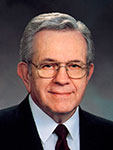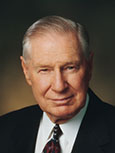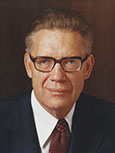Lesson 34: Mark 1
Introduction
Suggestions for Teaching
Mark 1:1–20
Jesus begins His ministry
A few days prior to class, ask two students if they will briefly share their testimonies of Jesus Christ in class. After the devotional, invite the two students to share their testimonies of the Savior. Afterward, ask the class:
- • What is valuable about hearing testimonies from several individuals rather than from just one person?
- • What do you think might be valuable about studying the testimony of Mark now that you have studied the testimony of Matthew?
Invite students to scan Mark 1:1–4, 9–11 silently, looking for the event with which Mark began his account of the Savior’s life.
- • With what event did Mark begin his account?
Explain that Mark’s account of the Savior’s life is different from Matthew’s. It begins suddenly and is fast-paced, emphasizing the Savior’s divinity by focusing on His works and miracles. Mark likely wrote his account based on what he learned from the Apostle Peter.
Summarize Mark 1:12–20 by explaining that after Jesus fasted for 40 days, He was tempted by the devil. He also preached repentance in Galilee and called disciples to follow Him. (Note: These accounts were taught in depth in the lessons on Matthew 4.)
Mark 1:21–39
Jesus casts out devils and heals the sick
Write the phrase Enemy Territory on the board and ask students what dangers a soldier in enemy territory might face.
Invite a student to read aloud the following statement by President Boyd K. Packer of the Quorum of the Twelve Apostles:

“You young people are being raised in enemy territory.
“We know from the scriptures that there was a war in heaven and that Lucifer rebelled and, with his followers, ‘was cast out into the earth’ [Revelation 12:9]. He is determined to disrupt our Heavenly Father’s plan and seeks to control the minds and actions of all” (“Counsel to Youth,” Ensign or Liahona, Nov. 2011, 16).
- • In what ways is our life here on earth like being in enemy territory?
Ask students to raise their hands if they have ever felt overwhelmed because of the evil influences and temptations that surround them. As students study Mark 1:21–39, invite them to look for a truth that will help them when they face evil influences and temptations.
Invite a student to read Mark 1:21–22 aloud. Ask the class to follow along, looking for what Jesus did in Capernaum and how the Jews responded.
- • Why were the Jews astonished at the Savior’s teachings?
- • What do you think it means that Jesus taught “as one that had authority”? (Mark 1:22).
Explain that the scribes were considered experts in the law of Moses. When they preached they often quoted former authorities in the law (see New Testament Student Manual [Church Educational System manual, 2014], 103). In contrast, Jesus spoke with the power and authority of His Father and as the great Jehovah who gave the law of Moses (see Joseph Smith Translation, Matthew 7:37 [in Matthew 7:29, footnote a]).
- • What did the unclean spirit know about Jesus?
- • How did the unclean spirit know who Jesus was? (The evil spirits that seek to possess physical bodies are Lucifer’s followers. They dwelt in the presence of Heavenly Father and Jesus Christ before being cast out of heaven.)
- • If you had been at the synagogue then, what would you have thought about Jesus?
Ask a student to read Mark 1:27–28 aloud. Ask the class to follow along, looking for how the people responded after seeing Jesus cast the unclean spirit out of the man.
- • How did the people respond?
- • What does this account teach us about the Savior’s power? (Students should identify a truth similar to the following: The Savior has power over the devil and his followers.)
- • How can knowing this truth help us when we feel overwhelmed because of the evil influences and temptations that surround us?
Invite a student to read the following statement by President James E. Faust of the First Presidency:

“[Joseph Smith] stated, ‘Wicked spirits have their bounds, limits, and laws by which they are governed’ [in History of the Church,4:576]. So Satan and his angels are not all-powerful. …
“… Satan’s efforts can be thwarted by all who come unto Christ by obedience to the covenants and ordinances of the gospel” (“Serving the Lord and Resisting the Devil,” Ensign, Sept. 1995, 6, 7).
- • According to President Faust, what can we do to receive greater power to resist the devil?
- • According to verse 28, what happened after the Savior cast out the evil spirit?
Summarize Mark 1:29–39 by explaining that the Savior healed Simon Peter’s mother-in-law of a fever, healed many others who were sick, and cast out many devils. Jesus continued to preach in Galilee.
Mark 1:40–45
Jesus heals a leper
Invite students to scan Mark 1:40 silently, looking for who came to the Savior as He continued to preach in Galilee. Ask students to report what they find. Invite a student to the front of the room. Ask students to imagine that the student at the front of the room has leprosy.
Explain that leprosy is a chronic disease that attacks skin, nerves, eyes, bones, and limbs. Left untreated, it leads to a painful death. In ancient times, it was believed that anyone who came in contact with lepers would contract the disease. Point to the student at the front of the room and ask:
- • If (student’s name) were a leper living in ancient times, how might (he or she) be treated?
Explain that to protect a community’s health and well-being, lepers were forced to live outside the town. The law required them to call out “Unclean!” to warn anyone approaching them (see Bible Dictionary, “Leper”; Leviticus 13:44–46). Ask a few students to act out this scene by walking past the student who represents the leper. As they walk by, ask the student representing the leper to yell out “Unclean! Unclean!” Ask the students walking by how they would react in this situation. Then invite the students to be seated.
- • How would having leprosy impact your life?
Invite students to imagine being lepers during the time of Jesus Christ. Ask them what they would do if they saw the Savior approaching.
- • According to Mark 1:40, what did the leper do when he saw the Savior? (Explain that the word beseechingmeans begging or pleading.)
- • How did the leper show his faith in Jesus Christ? How does the phrase “if thou wilt” imply the leper’s faith?
Invite students to read Mark 1:41–42 silently, looking for how the Savior responded to the man’s pleading.
- • What impresses you about how the Savior responded to the man’s pleading?
- • If you had been the leper, what would it have meant to you to be touched by the Savior? Why?
- • How would your life have changed if Jesus Christ healed your leprosy?
Write the following statement on the board: Leprosy can be likened to sin.
To help students understand how leprosy can be likened to sin (see Leviticus 14), invite a student to read aloud the following statement by Elder Bruce R. McConkie of the Quorum of the Twelve Apostles:

“Leprosy in biblical times, in addition to its desolating physical effects, was looked upon as the symbol of sin and uncleanness, signifying that as this evil disease ate away and destroyed the physical body, so sin eats away and corrupts the spiritual side of man” (The Mortal Messiah, 4 vols. [1979–81], 2:45).
- • In what ways can leprosy be likened to sin? (In likening leprosy to sin, ensure that students understand that diseases are not necessarily caused by sin.)
Invite a student to reread Mark 1:40–42 aloud, this time substituting sinner for leper and sin for leprosy. Ask the class to follow along, looking for how we can liken this leper’s healing to being cleansed from sin.
- • As you read the verses this way, what words suggest the idea of being forgiven?
- • How can we liken what the leper did to be cleansed from leprosy to what we need to do to be cleansed from sin?
- • What principle can we learn by likening the healing of the leper to being cleansed from sin? (Students may use different words, but make sure they identify the following principle: As we exercise faith and come unto the Savior, He will have compassion on us and cleanse us from sin. Using students’ words, write this principle on the board.)
- • In what ways must we exercise faith and come unto the Savior so He can forgive us of our sins?
Invite students to consider again what the leper’s life was like before and after he was healed.
- • How can coming unto Jesus Christ to be cleansed from sin change someone’s life?
- • When have you seen someone’s life change after being cleansed from sin through Christ’s Atonement? (Caution students against mentioning individuals by name or identifying their past sins.)
Ask students to ponder what sins they need to be cleansed of. Invite students to come to the Savior by exercising faith in Him through prayer, repentance, and obedience so He can make them clean. Consider sharing your testimony of the cleansing power of the Savior’s Atonement.
Invite a few students to take turns reading aloud from Mark 1:43–45. Ask the class to look for the instructions the Savior gave the healed leper. Ask students to report what they find.
Explain that the law of Moses required those healed of leprosy to show themselves to a temple priest and offer a sacrifice.
- • What did the man do after the Savior warned Him against telling others?
- • What happened because the man spread the news of his healing?
Consider concluding the lesson by asking students what impressed them most about the actions of Jesus Christ recorded in Mark 1.
Commentary and Background Information
Mark 1:24–25. Why did the Savior command the devils to “hold [their] peace”?
Elder Bruce R. McConkie of the Quorum of the Twelve Apostles taught that Jesus “consistently refused to permit [devils] to bear record of his divinity. Converting testimony comes from God, not from Lucifer. Had Jesus let unclean spirits go unrebuked, or had he acquiesced in their testimony of him (though in fact it was true), the Jews would have claimed greater justification for their false charge against him, ‘He hath a devil, and is mad; why hear ye him?’ (John 10:20.)” (Doctrinal New Testament Commentary,3 vols. [1965–73], 1:168).
Mark 1:40. Leprosy
One Bible commentator described the devastating effects of leprosy as follows:
“The symptoms and the effects of this disease are very loathsome. There comes a white swelling or scab, with a change of the color of the hair … from its natural hue to yellow; then the appearance of a taint going deeper than the skin, or raw flesh appearing in the swelling. … The nails loosen and drop off, the gums are absorbed, and the teeth decay and fall out; the breath is a stench, the nose decays; fingers, hands, feet, may be lost, or the eyes eaten out. The human beauty has gone into corruption” (Charles F. Deems, The Light of the Nations [1884], 185).
Mark 1:40–42. Through the Savior’s Atonement we can be made clean from sin
Elder Shayne M. Bowen of the Seventy taught:
“The Atonement of Jesus Christ is available to each of us. His Atonement is infinite. It applies to everyone, even you. It can clean, reclaim, and sanctify even you. That is what infinite means—total, complete, all, forever. President Boyd K. Packer has taught: ‘There is no habit, no addiction, no rebellion, no transgression, no apostasy, no crime exempted from the promise of complete forgiveness. That is the promise of the atonement of Christ’ (“The Brilliant Morning of Forgiveness,”Ensign, Nov. 1995, 20)” (“The Atonement Can Clean, Reclaim, and Sanctify Our Lives,” Ensign or Liahona, Nov. 2006, 34).

沒有留言:
張貼留言